Approaching the 1-year milestone with twins, we really feel like we’ve hit our stride. Our family had settled into a reliable routine that the boys could depend on, and seemed to be thriving under. They are fearlessly testing their freedom in the safe play spaces we have created for them. Gross motor activities are the dominant favorite. The boys had started walking late into their 10th month, and now are running gleefully throughout the house. Every piece of furniture is a potential climber. They think nothing of climbing up and diving off the couch. We were caught off guard by how much baby-proofing was already needed before their first birthday. They are so tall (95ᵗʰ percentile for their age) that everything seems easily within their reach. Thankfully they seem to be built of hardy stock and quickly learned how to ascend and descend safely and independently.
Consider this as what an average day with 1-year-old twin boys looked like…..
Starting The Day
I feel it sets the day in motion for everyone to be washed and changed into appropriate clothing to start our day. The boys still have their diapers changed lying down. Many children at this age don’t like being changed lying down, but ours seems content. We’ll enjoy the peaceful moments where we can. I then help them undress from their pajamas and lay out a selection of outfits. The boys each get to pick from two outfits, a top, pants, and a sweater if needed. Whichever choice they reach out and grasp first is their choice for the day. The clothing I lay out is always seasonally appropriate, and each piece of clothing matches with the other. I only give a choice where all options are yes!
Next, I make my way from the nursery to the kitchen to prepare breakfast. The twins will either follow or play in their room for a while longer. I put on the kettle to warm milk for their bottles, and make a tea for myself. Typically the boys play quietly for 30-40 minutes until breakfast is ready. Occasionally they wake up extra hungry and need a bottle right away.
Meal Time: Baby Lead-Weening & Bottles
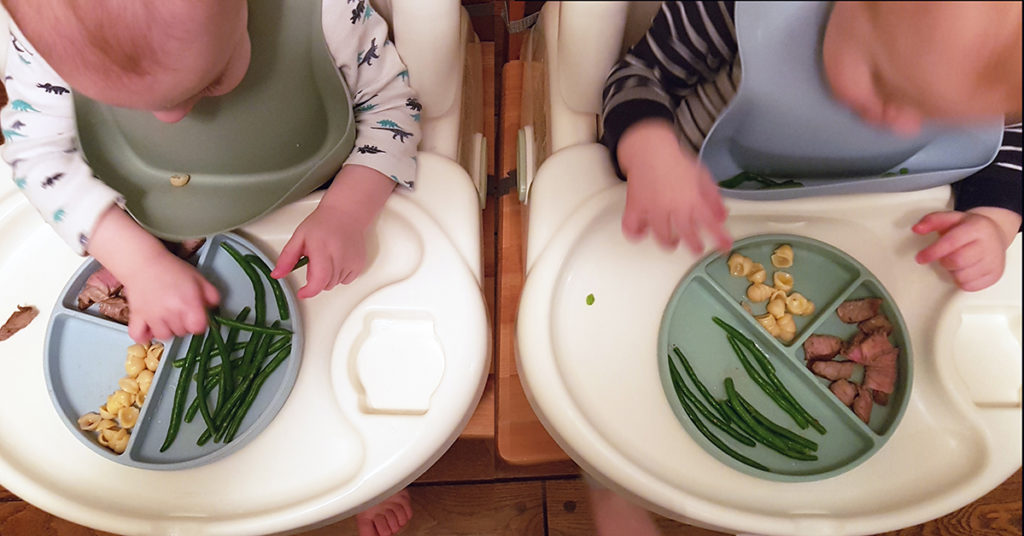
A typical day’s menu this month:
- 120 ml 3% cow milk
- Steel-cut oatmeal with Bananas
- Scramble eggs with crushed bacon
- Bite of our peanut butter toast
Prenap Bottle
- 180 ml 3% cow milk
Lunch
- Homemade squash soup
Evening Bottle
- 120 ml 3% cow milk
Dinner
- Chickbreast
- Peas
- Roasted potatoes
Dessert:
- Full-fat plain yogurt
- 1/2 apple each
- Toddler cookie
Bedtime Bottle:
- 180 ml 3% cow milk
Montessori Play at 12 Months
Activities this month encourage big body movements (gross motor skills) and refine precise muscle movements (fine motor skills). They are learning to carry objects while walking, grasp small objects, place objects into designed positions, and practice everyday life skills. Objects are spending much less time in their mouths. If a non-food object is placed in the mouth, they more easily recognize it as not being adaptable and simply remove it themselves. There are more easier to distinguish between what is food.
We make sure all the toys are in good working order, and all pieces are accounted for and presented in a way that interests the twins. This month we invested in some new store-bought toys. Approximately 70% of what the boys own was purchased by us second-hand, given as hand-me-downs from close friends, or gifted. This gives us a lot more freedom within our budget to test out what toys interest them and rotate toys in/out as needed.
Some of their favorite toys this month were:
Pikler Triangle, Arch, and Ramp
Being winter babies, the boys’ gross motor needs steadily climbed as the outdoor temperature declined. These climbing apparatuses allow children greater freedom to explore full body movement, and coordination between body parts and build confidence. The ramp was first introduced to the twins at approximately 8 months as a natural barrier to climbing on the TV stand. As they got older, we connected the ramp and finally the triangle. The boys beam with pride perched at the top of the arch, or after navigating across the ramp unaided. While I am fully comfortable allowing the boys unsupervised use of the ramp and arch (use your own parental discretion), the Pikler Triangle is still used under direct supervision.
Object Permanence Box
This toy has been a huge hit in our home. The boys first started placing the ball in the hole around 11 months. Now at 12 months, one would spontaneously run over, place the ball in the hole, and beam with pride at the satisfying ‘clunk’. They would then scampered away until another dopamine hit was needed.
Faces Circle Puzzle
Circle puzzles are the simplest puzzles for baby to start from. No tricky corners to rotate around. The boys are perfecting their pincher grasp lifting and replacing the puzzle pieces, and learning to work with 2D objections. How the twins interact with this toy depends on whether they are participating together or alone. If both boys are drawn to the puzzle together, there is a mad frenzy to remove the circle pieces before the other can. In this scenerio, they are less interested in reassembling the puzzle.
Individually, Baby B will place the puzzle board across his lap and concentrate or return 2 or 3 pieces back into place. It’s wonderful to watch him study the board, and select which piece he believes goes where. Often he will have a puzzle handle in his mouth to aid his concentration.
Baby S takes the relay approach. He charges up to the puzzle, replacing (or removing) a puzzle piece before scampering off again. He will return several times, coming and going in quick succession. Baby S can replace the two largest circles but wants to enjoy a free movement session in between. He’s not yet ready to sit still and complete the task uninterrupted. For now, he enjoys a game within a game.
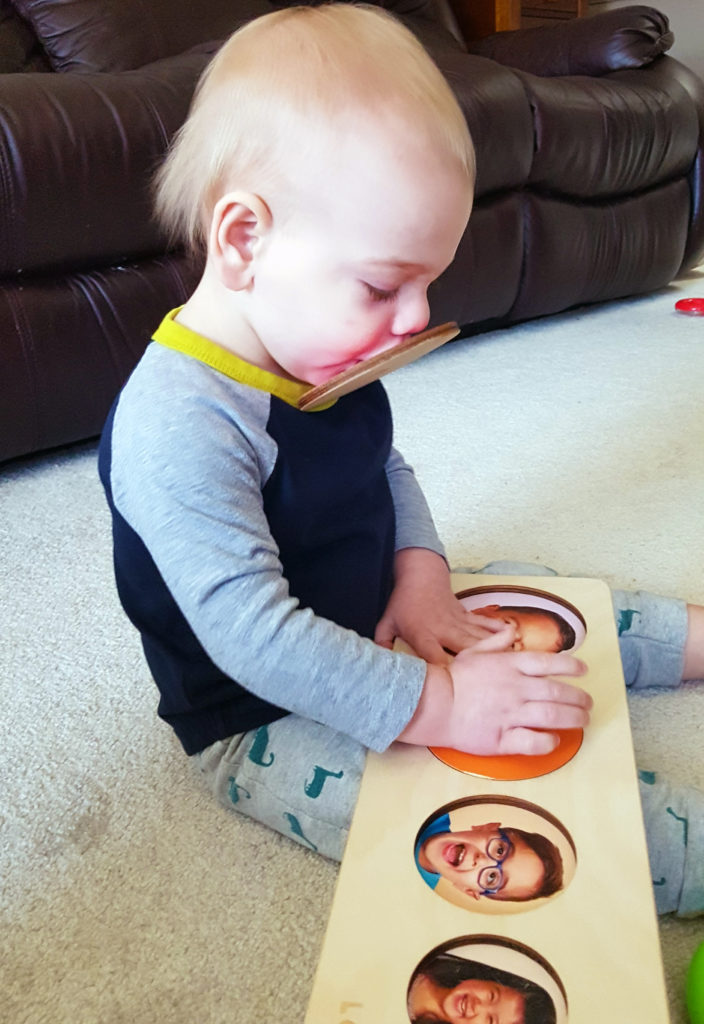
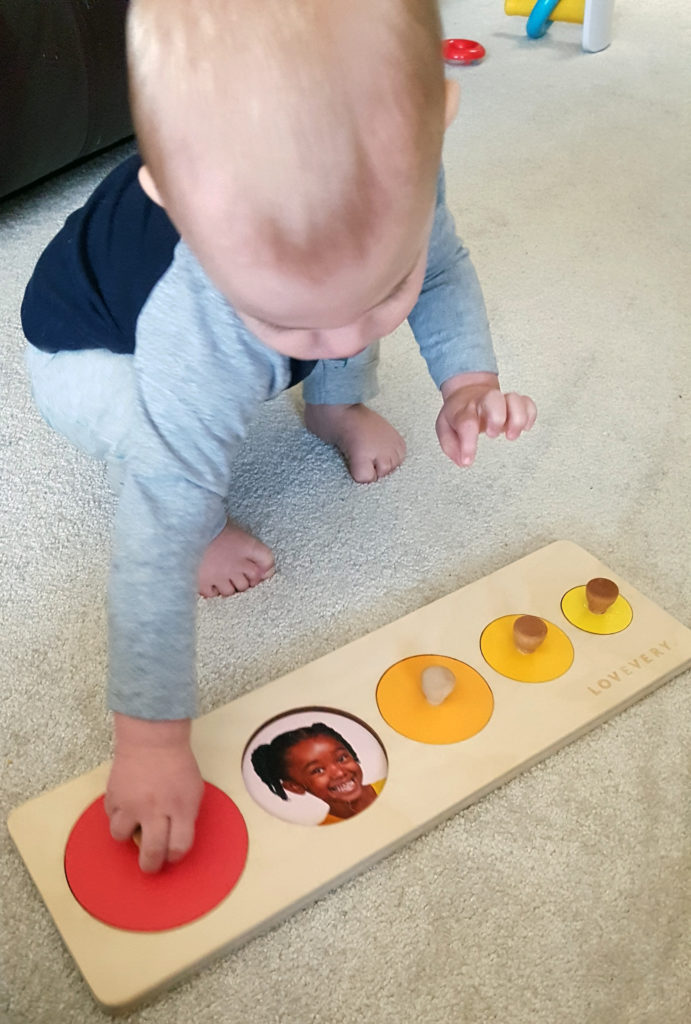
Musical instruments
Tambourine – for tapping or hitting
Xylophone- for tapping with fingers or striking with the wooden mallet
Wooden Eggs- each egg shaker makes a slightly different sound
Hand Bells- a delicate jingle to shake or clap
Baby-friendly musical instruments should be included in every Montessori shelf. Not only does baby benefit from building on fine motor skills (striking a xylophone for example takes a lot of coordination), but following along to a song or parent-led rhythm is a wonderful bonding moment of the family. Baby B is particularly fond of the tambourine, and will march around the room striking the surface with his fingers. Both boys enjoy shaking handbells. For quieter moments, and during song time the boys love shaking wooden egg shakers. Each handbells or egg shaker makes a slightly different sound, refining their auditory senses to pick up on and distinguish between the differences.
Sleep Schedule
Wake up: 9:30am – 10am
Nap: 2 pm-4:30 pm
Bedtime: 10 pm
Nap Time
We have reduced the naps to once daily. They will typically sleep from 2 hours to 3 hours. They have naturally fallen into the same rhythm at this age. Before, one might take 30 minutes longer to fall asleep or wake up an hour before the other. I didn’t worry too much about keeping them on the same sleep schedule. I realized very quickly that it was in the best interests of my sons that I respect them as individuals with very different sleeping rhythms. Now with time those rhythms are in sync. Both boys go down at the same time, and for the most part, wake up together.
Night Time
We are very fortunate that our twins took to overnight sleeping early. Since about 3 months the twins have slept through the night. Our family runs on a later schedule to accommodate my husband’s work schedule. When they were first transitioned to the nursery, the boys would sleep from midnight and wake sometime between 10 am and 11 am (with late-night feedings of course). That time crept earlier to a 10:30 pm bedtime, and now as early as 9:45 pm bedtime with a 9:30 am wake time. So far I’d mark our efforts as a great success. While they seem to be transitioning to a slightly earlier sleep rhythm, they have continued to sleep through the night with rare interruptions.
Bedtime Routine
We read the boys one or two books and reread those stories twice each. They particularly enjoy a soothing “touch and feel” book where we can go beyond the text and describe the illustrations in rich, descriptive language. “Go to Sleep Baby Boy” is still a bedtime classic. We read the books slowly, pausing longer than you might expect for their little brains to process the words and images. They love the photographs of real babies. Young children have a difficult time distinguishing between reality and fantasy. Montessori values realistic images grounded in real-life scenarios. This book reflects on the day’s routine while settling down for bed. We can add in specifics of the boy’s day each night we read the book.
How I Put Twins To Bed Alone
If I am alone, one baby is seated in their car seat (lock in/lock out model) at my feet and the other is cradled in my arms. They each received a bottle and then offered a soother. We are severely limiting soother use as we try to wean them. Thankful the boys also seem less interested, and half the time will reject their soother. Rocking one in my arms, and the other with my feet, I sing lullabies to them as they finish their bottles. It melts my heart to see their eyelids go heavy and close as I soothe them with soft sung rhymes. I carry the first baby in my arms to bed, then return for the other. The remaining twin will have likely followed behind down the hall, curious or weeping that I had to step away for a moment. I scope them up, help hold the bottle if any milk remains, and rock them for a few minutes before laying them to sleep as well. I always treasured rocking my sweet babies to sleep. As they have gotten older, they prefer to be rocked less. Instead, they put to bed to stretch out and roll over with hardly a fuss.
Time For Mom
The prepared adult is so much more than just reading, planning and preparing the space for your little one. Your efforts must also be turned inwards. That can seem like an exhausting proposition, taking time for yourself when there are so many other things in need of your attention. The truth is, that parental burnout is real. Twin moms are especially susceptible. If it helps quash the mom guilt, think about taking time for yourself as a proactive burnout insurance for your children.
Working Out
Before I had the boys, I used to work out 5-6x a week and run 5km-10kms (3-6 miles) 3x a week. During my pregnancy, I continued to work out with slight modifications until birth and continued running 3km-5km (2-3 miles) up until 26 weeks. I thoroughly enjoy testing my limits, setting new goals, and the adrenaline high of a well-earned workout. While I tried working out in my pockets after birth (mostly core strengthening) I was already struggling to get enough calories to maintain my breast milk supply. I simply didn’t have enough gas in the tank to work out in the manner I enjoyed. Now, with the boys transitioning to cow’s milk I can enjoy a 30-minute workout 3x a week. I am so happy to be back at it.
Screen Free Mornings.
I started this routine back when the boys were 6 months old. During the newborn months, I enjoyed turning on the news and nursing them before enjoying a coffee while they went back to sleep. As they got older, and their needs became more complex our mornings could not support any screen time. We have remained committed to this routine and find the mornings (for what they are) are less rushed and more relaxed.

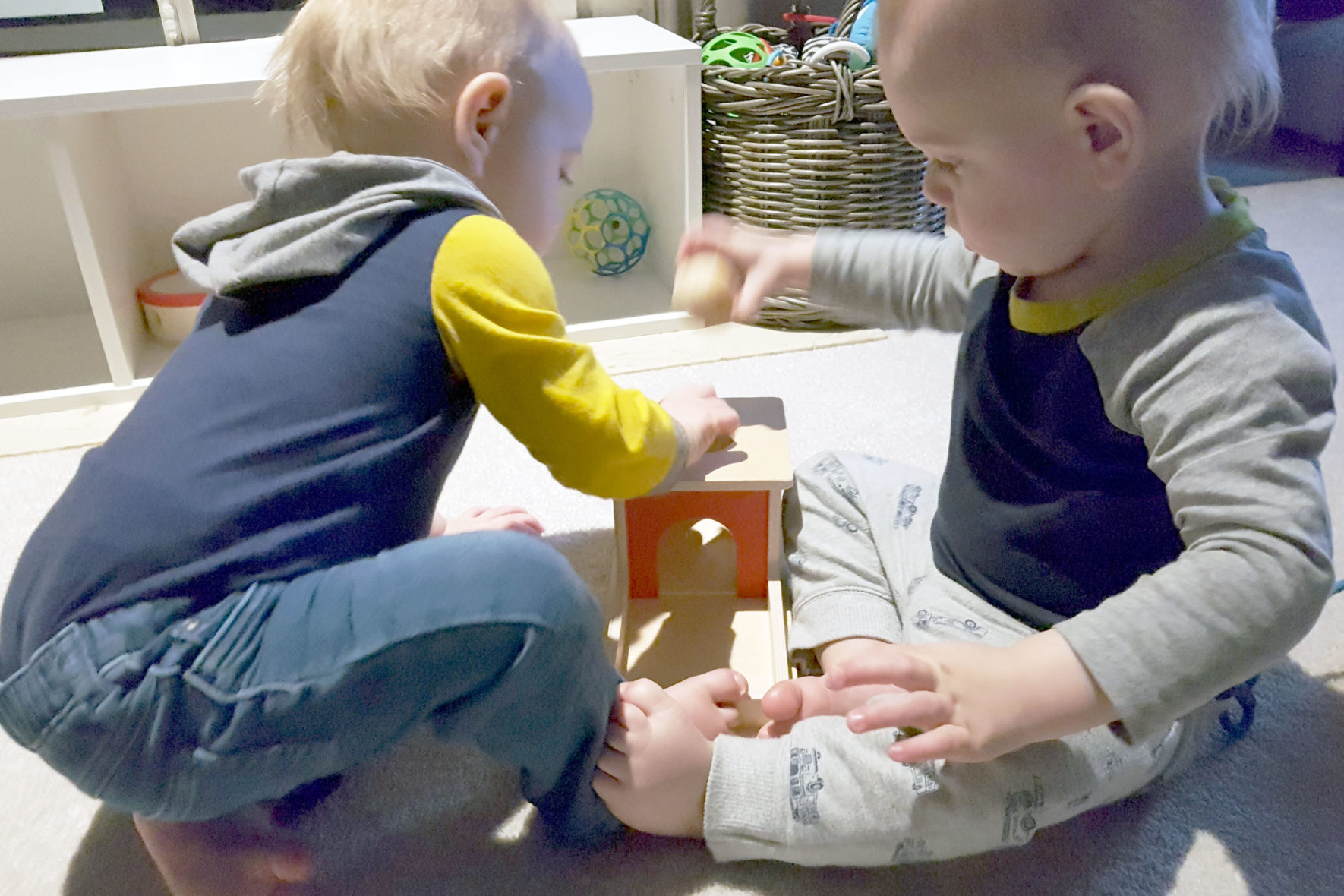
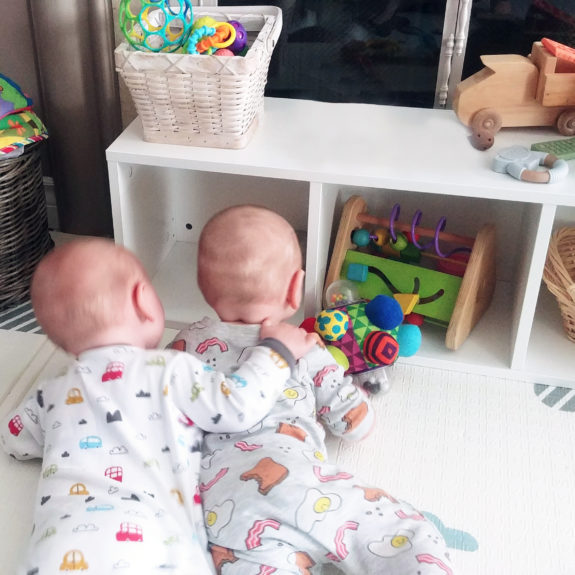
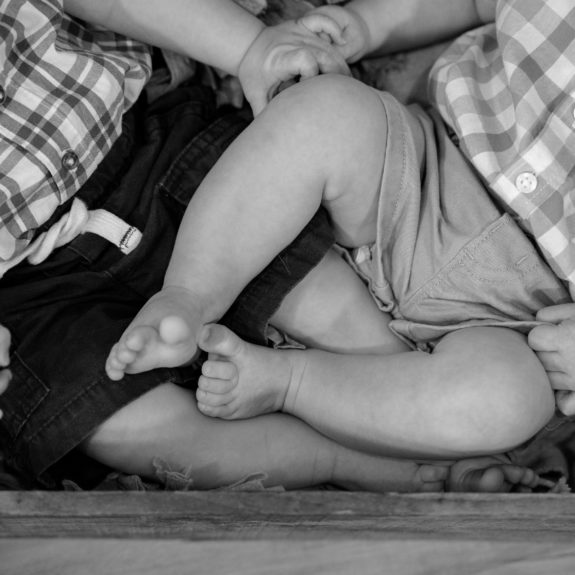
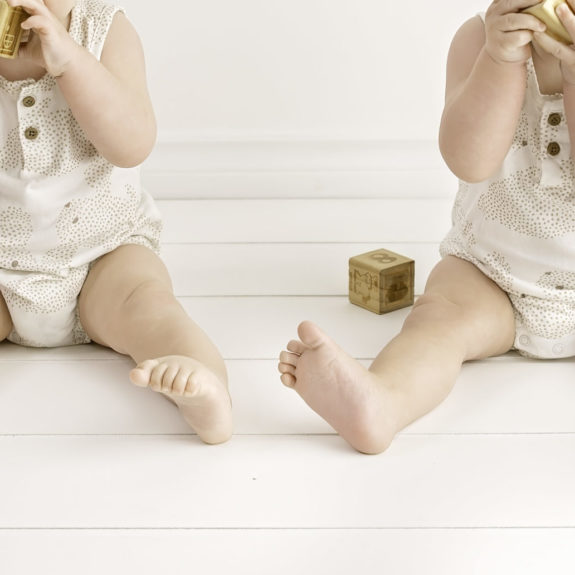


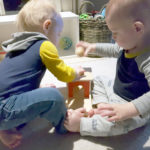

Leave a Reply
You must be logged in to post a comment.